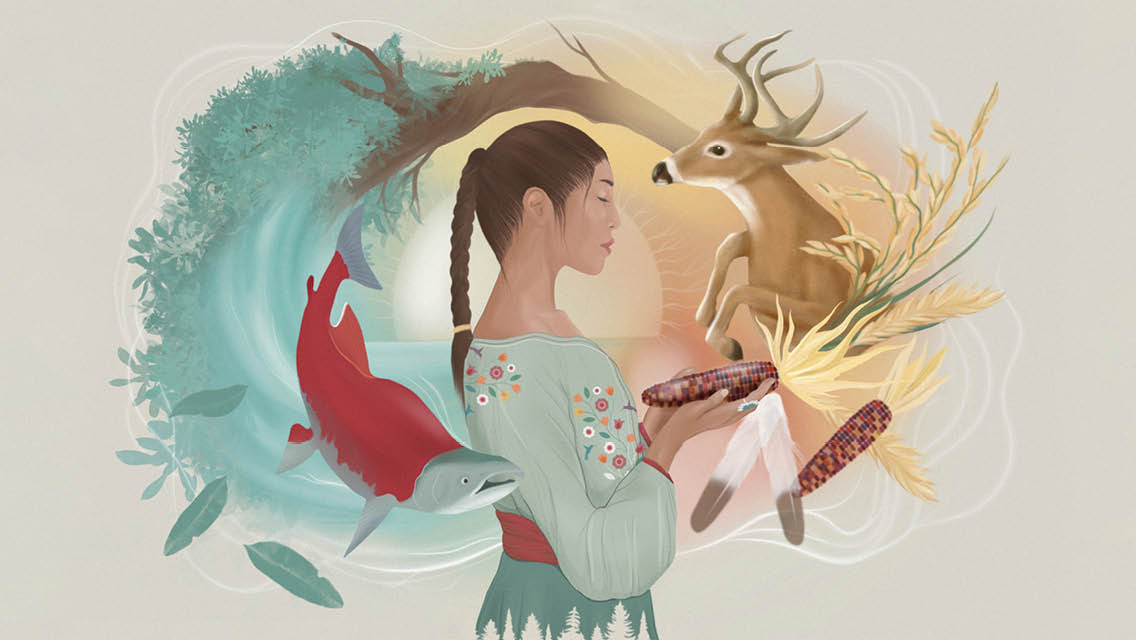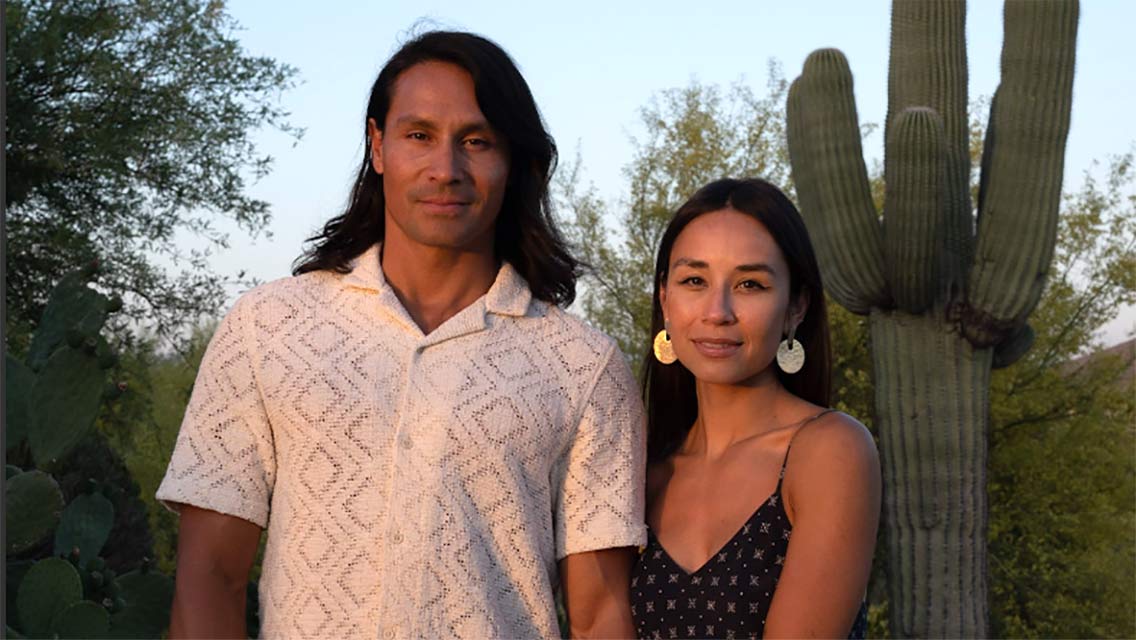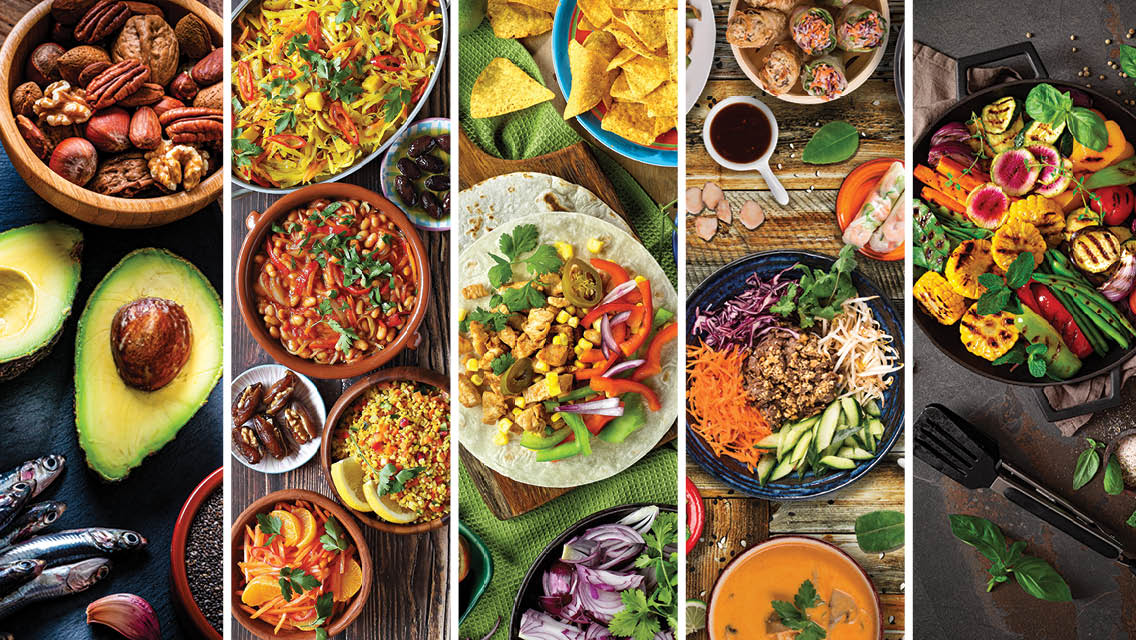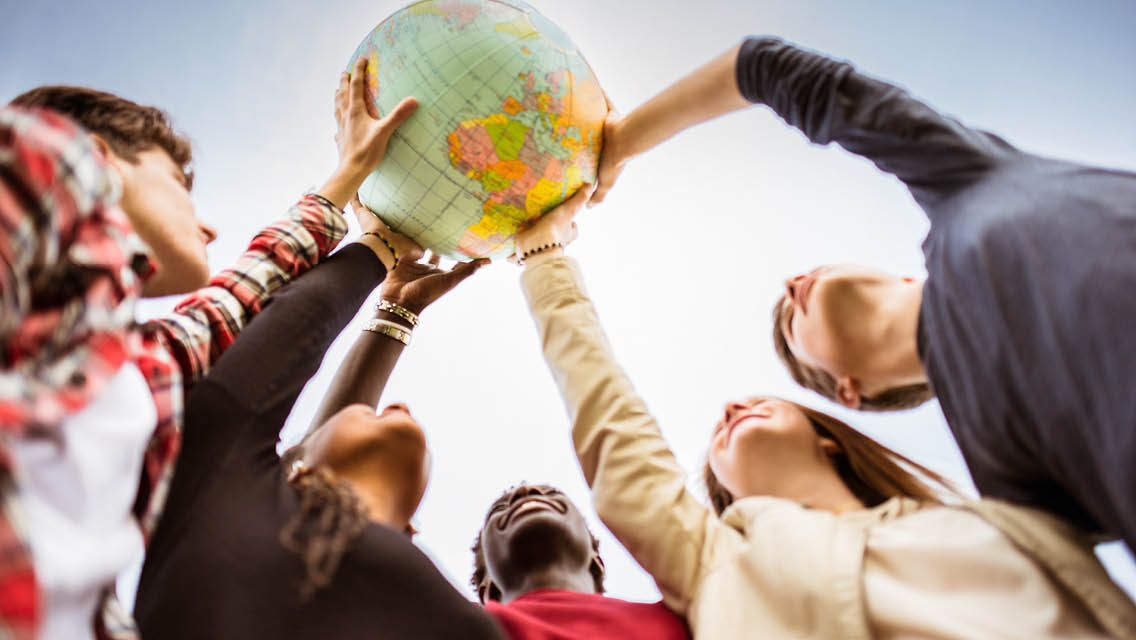Although I grew up surrounded by fields of food in Midwestern farm country, I’ve had a dysfunctional relationship with food my entire life.
In hindsight, my ’90s upbringing — sans high-speed internet, smartphones, and social media — seems relatively simple compared with what today’s kids face. Even so, as an Alaska Native (Tlingit) coming of age in rural Minnesota, I still felt immense pressure to conform to impossible beauty ideals.
With my chubby cheeks, olive skin, and deep brown eyes, I just didn’t fit in — not among my blond-haired, blue-eyed classmates; not into the popular midriff-baring fashions du jour; not with the cookie-cutter criteria for how American girls are “supposed to” look.
It would take me decades to understand that the era’s skewed health ideals were designed to make us all feel inadequate. But BIPOC, in particular, have been set up for failure with this absurd ultimatum: Assume as much whiteness as possible or be rendered utterly invisible. It’s the enduring effect of decades’ worth of whitewashed, one-size-fits-all health culture that pervades much of society.
As a teen, I desperately tried to keep up with what was “right” and “wrong,” subsisting on a contrasting blend of packaged “healthy” fare — think SnackWell’s and Lean Pockets — and produce from our family garden.
In college, I rebounded from the freshman 15 with restrictive eating and excessive exercising. Slimming down to my smallest size, I received praise for my jutting cheekbones and protruding clavicle. But then I was slapped with a diagnosis of “eating disorder not otherwise specified” (EDNOS), a now-outdated term that fell out of fashion due to its broad nature.
I wondered, How could the way I treated my body be so wrong if society was telling me it was so right?
Upon entering adulthood, I became even more confused by the constant onslaught of conflicting advice from the so-called wellness industry, which had cleverly swapped places with its canceled twin, the diet industry. I pretended to feel satiated by the kale salads, bone broths, and collagen drinks it touted.
In short, for decades I have battled my own body and fought my food instincts, riddled with endless guilt.
That food shame is very common among BIPOC, who rarely see themselves or their foods reflected in health recommendations, explains Kera Nyemb-Diop, PhD, who created the popular Instagram account Black Nutritionist.
A prime example? The body mass index (BMI), developed in the 1830s by Belgian statistician Adolphe Quetelet, who was obsessed with defining the “average man” by collecting data mainly from white European men. Known as the Quetelet Index until 1972, this height-to-weight ratio went on to become a gold standard health indicator, but it has recently been dethroned due to what the American Medical Association describes as its “historical harm” and “racist exclusion.”
“For too long, being healthy has meant being closer to white aesthetics,” Nyemb-Diop says. “So much of the public-health narrative is rooted in white supremacy. It places the blame on marginalized communities for higher rates of conditions like diabetes by saying they’re not eating well or exercising enough, instead of talking about the socioeconomic inequities at play.”
Native American nutrition educator Valerie Segrest (Muckleshoot) seconds that. “Before European contact, there wasn’t a word for ‘diabetes’ in any Indigenous community,” she says. “It wasn’t as if we suddenly decided to stop eating our traditional foods. Indigenous people were forcibly removed from our foodways, followed by the systematic interruption of knowledge transfer to the next generation by sending our children off to boarding schools, erasing their identities, and feeding them rations that altered their food preferences. Never before in human history have we been so disconnected from where our food comes from, and that has great impacts on our health.”
Like so many Native Americans who have been displaced and disconnected from their cultural traditions, I recently embarked on a personal journey to embrace my Tlingit heritage and tap into the ancient wisdom of my ancestors. This quest would require decolonizing not only my mind but also my plate.
But what exactly does that mean?
The Web of Colonialism
For Oglala Lakota chef Sean Sherman — whose acclaimed Minneapolis restaurant, Owamni, represents one of the most prominent examples of decolonized cuisine today — plate decolonization translates to delectable dishes free of Eurocentric ingredients like beef, chicken, pork, dairy, wheat flour, and cane sugar. Instead, he focuses on local, seasonal fare such as venison, walleye, and wild rice sourced from Indigenous producers. (Learn more about Sherman and his work at “Sioux Chef Sean Sherman on the Importance of Indigenous Food.”)
And that’s precisely where Sherman suggested I start — by identifying and appreciating the abundant food around me. After all, there are countless edible plants that we often overlook, like dandelion greens and stinging nettle, quite literally in our own backyards.
Relishing regional bounty was the impetus behind the Decolonizing Diet Project, led by Northern Michigan University Native American studies professor Martin Reinhardt, PhD (Anishinaabe Ojibway). Study participants — both non-Native and Native, including Reinhardt himself — spent a year eating primarily Great Lakes Indigenous foods, such as bison, turkey, beaver, corn, beans, maple, and berries.
The result? They recorded statistically significant improvements in weight, BMI, and girth, as well as noteworthy or significant reductions in cholesterol, blood pressure, and blood-glucose levels.
“I strongly believe that the healthiest way for us to live is to eat locally and Indigenously, and now we have evidence to support that,” says Reinhardt, who during the project procured his food through hunting, fishing, gathering, gardening, and trading — much like tribal communities did precontact.
“For Anishinaabe and other Indigenous cultures, we have a covenant with plants and animals as relatives. In that way, our food relationship is not a matter of producers and consumers; it’s about respecting our relatives in order to be in balance with the world around us.”
Unsurprisingly, many Decolonizing Diet Project participants shopped for ingredients at grocery stores and encountered issues like high prices and low availability. The meals were work-intensive and required more prep time than ones made with modern convenience foods.
“What it means to decolonize the diet is all situational,” explains Claudia Serrato, PhD. “For me, it started with eliminating foods that were introduced as a result of Spanish colonialism. But for a friend with Chinese heritage, it meant avoiding tomatoes and other ingredients that were introduced to her family from Mesoamerica.
Tribal treaty rights also played a factor for those who did hunt and gather, dictating when, where, and how they could harvest wild bounty. But all study participants walked away with a deeper knowledge of Native American foodways that will likely inform their eating choices for life.
Indigenous culinary anthropologist Claudia Serrato, PhD, went on a soul-searching quest similar to mine in an effort to connect via food to her P’urhépecha, Huasteca, and Zacateco roots. Through her work, she has realized that decolonizing one’s plate is an extremely personal experience, without the one-size-fits-all approach we’ve been taught to expect.
“What it means to decolonize the diet is all situational,” she explains. “For me, it started with eliminating foods that were introduced as a result of Spanish colonialism. But for a friend with Chinese heritage, it meant avoiding tomatoes and other ingredients that were introduced to her family from Mesoamerica.
“To get started, I encourage people to think about how their grandmother or their great-grandmother ate. It’s all about reestablishing those cultural connections that bring us back to our origins.”
In other words, decolonizing work isn’t just for Indigenous peoples: We can all benefit from untangling ourselves from the web of colonialism.
A Greater Ecosystem
Much like the pervasive health ideals I’ve wrestled with throughout my lifetime, colonial constructs have created a panopticon effect, in which we’re all subconsciously self-policing in a bid for social and political capital. But the positive effects of decolonizing our plates go far beyond personal well-being. This act is also inherently linked to the climate crisis, the Land Back movement, and Indigenous sovereignty.
“We should be asking ourselves how our food choices can concurrently heal the landscape,” says Serrato. “With Indigenous knowledge, we understand that we are connected to the land, the plants, and the animals. When we do decolonizing work, we slowly begin to repair not just our bodies but also the landscape and our ecological relationships, which have been completely severed as a result of food politics.”
Indeed, Indigenous farmers have long focused on cultivating regional ingredients, as opposed to the big three monocrops — corn, soy, and wheat — that make up much of the typical American diet. Supporting Native producers supports not only their self-determination but also the earth, thanks to the traditional ecological knowledge that tribal communities have practiced since time immemorial. In fact, while Indigenous peoples make up just 5 percent of the world’s population, they protect around 85 percent of global biodiversity.
In contrast, our modern Western approach falsely puts humans at the center of the universe, asserts Nicole Redvers, ND, MPH (Deninu K’ue First Nation), director of Indigenous planetary health at Western University’s Schulich School of Medicine and Dentistry.
“We’re just one small part of a greater ecosystem, and we need to start seeing health as part of that larger system.”
“The problem with the social determinants of health — our socioeconomic status, our intersectionality, our geography — is that they still place humans in the context of human needs and are not inclusive of planetary health,” she says. “If the water is not healthy, we’re not healthy. If the soil is not healthy, the food is not healthy. We’re just one small part of a greater ecosystem, and we need to start seeing health as part of that larger system.”
I found myself fascinated with Redvers’s book, The Science of the Sacred, which highlights countless studies about epigenetics and quantum physics to deftly bridge the gap between traditional and modern medicine. Her extensive research has also helped me understand the strong connection between personal and planetary health and why a reframing of our relationship with the earth is so necessary.
As it turns out, my mission to heal my relationship with food goes far beyond just my plate. It’s really about living in harmony with not only my body’s landscape, as Serrato puts it, but also the landscape around me.
With this more global perspective, I’ve come to realize that I’m not going to find some magic bullet.
Instead of seeking quick fixes and external gratification, I’m endeavoring to become more in sync with myself, the seasons, and the earth, as my ancestors once were. I’m relearning to trust my body, mind, and spirit to guide me toward what’s right or wrong for me, which is highly personal.
And I’m giving myself grace because, as all these experts emphasize, decolonizing your plate isn’t an overnight transformation: It’s a lifelong journey.
Food — especially traditional BIPOC food — has been vilified and weaponized for far too long. It’s high time we change that. For my part, I’m nurturing a relationship with food that lets it restore my body, repair past traumas, and revive Indigenous wisdom for future generations.
“In our traditional ways, our foods are our teachers,” Segrest gently reminds me. “They teach us how to live on the land and how to be better humans. They are our gifts.”





This Post Has 0 Comments